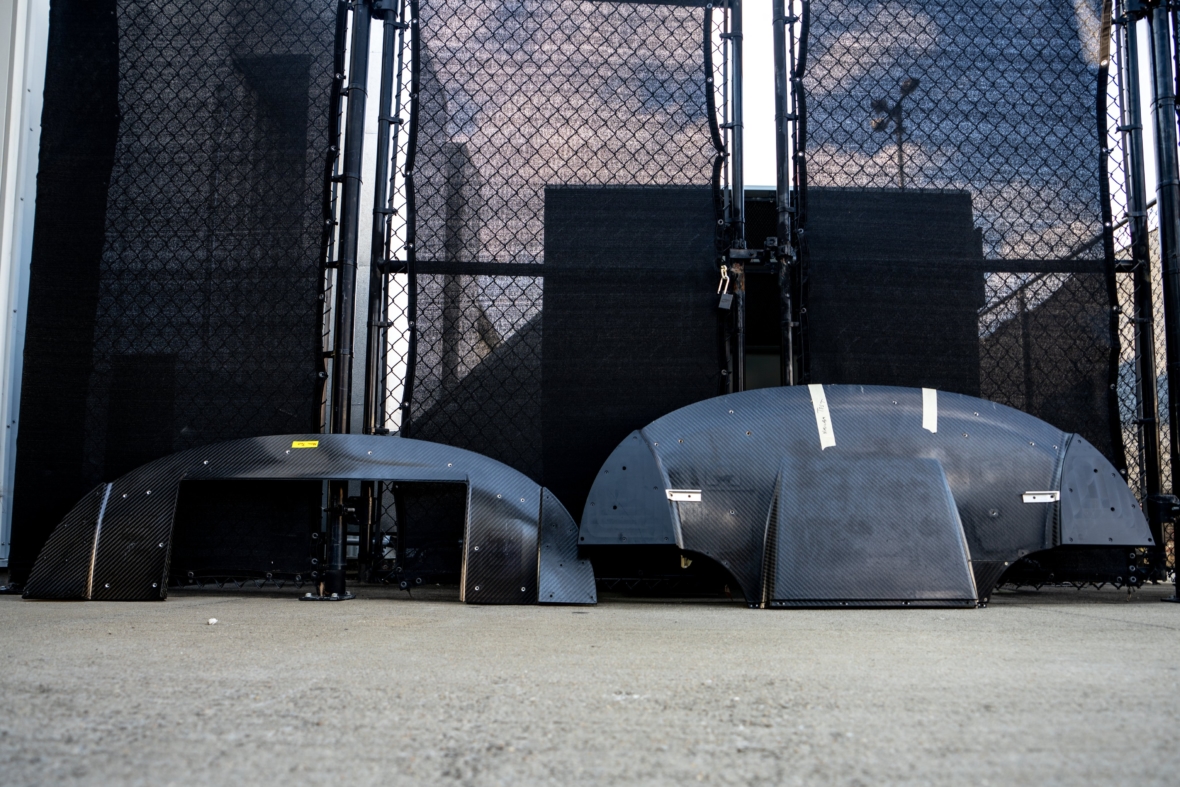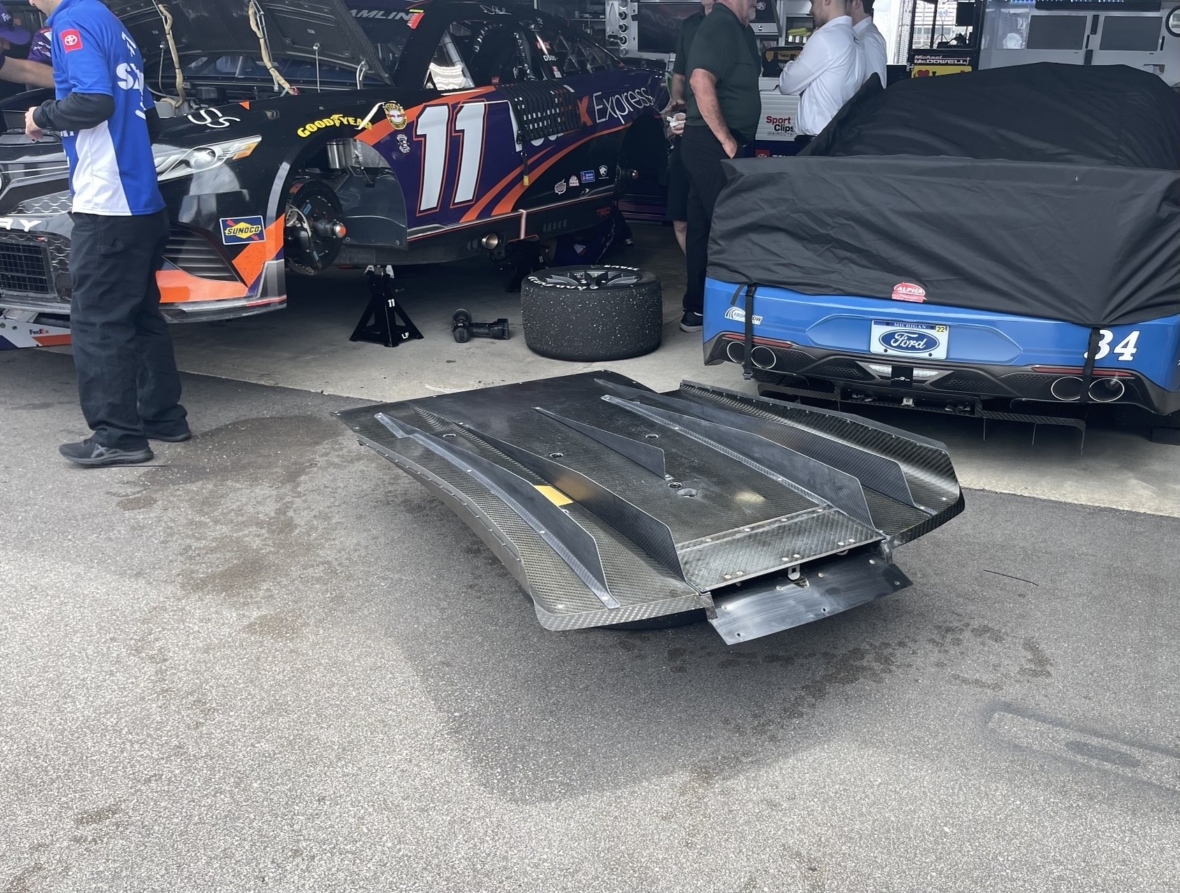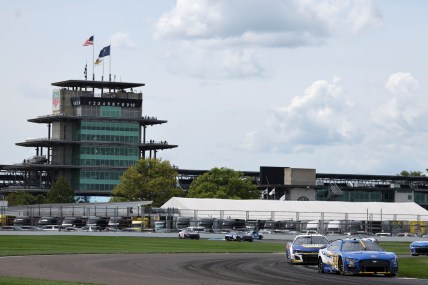As NASCAR maps the potential return of the Brickyard 400 with a three-car tire test early this week on the Indianapolis Motor Speedway oval, it also marks an opportunity to further test underbody configurations intended to improve the short-track racing product.
The aerodynamic swings made earlier in the month during a test at Richmond Raceway did not produce the intended gains. NASCAR outfitted six cars with what was called by many in the garage a “lift splitter,” a front underbody intended to create lift for a leading car and downforce for those in traffic, but it largely made no difference to Harrison Burton, William Byron, Justin Haley, Ryan Preece, Noah Gragson, and Christopher Bell.
Related: NASCAR power rankings – Michael McDowell earns a place ahead of Watkins Glen
“I didn’t think there were any big changes,” Bell said. “I go back to the January Phoenix test and I thought that was a dramatic change that directly improved (dirty air) in traffic during the test and once we got the race track, a lot of the drivers said they couldn’t tell a difference in racing conditions.”
In addition to the lift splitter, NASCAR also tried a test race after removing the rear diffuser from the underbody of the car and offsetting the loss of downforce thereby adding two more inches to the rear spoiler, four inches overall, something that generated the most optimism overall.
Ultimately, NASCAR and the teams decided to take this package to the Indianapolis tire test because they wanted to see what it would do on long straights and higher straight-line speeds to replicate a Martinsville or New Hampshire.

That point was illustrated at Richmond by NASCAR’s chief aerodynamicist, Dr. Eric Jacuzzi.
“Indy is obviously a track with a narrow racing groove,” Jacuzzi said. “But the main thing is coming out of here, the drivers said, ‘hey, really feeling the tire a lot (and) the aero is a small part of the cornering,’ I guess, powering the car. So, going to a place like Indy where the speed is much higher, should give us a really good read on whether that’s an improvement. It’s another opportunity to evaluate it in that environment.”
Bell echoed that sentiment.
“They’re basically trying to learn if the airspeed was too slow at Richmond to tell the difference in traffic,” Bell said. “That’ll be good, and they should learn if that’s the problem.”
This is the first generation of NASCAR car that has a completely sealed underbody, the Cup Series now creates its aerodynamic effects under the car as opposed to on the body with spoilers or wings, but most drivers feel like that is a step backward.
Even though the racing product has been largely compelling on big tracks this year, overcoming the dirty air off the lead car is still a significant problem, and it’s downright vital to overcoming it on short tracks. On his podcast earlier this month, Corey Lajoie made a compelling argument to get rid of the rear diffuser.
“If we keep the cars a little bit less stuck to the race track — because now we have 25 percent more rubber on the ground due to wider wheels — I think if we took some downforce off to match, you’ll have some comers and goers and should make the short tracks a little bit more as we’re accustomed to seeing,” LaJoie said. “Nobody wants the short tracks to be more racy than this guy, and I know that NASCAR is certainly working on it.”
The rear diffuser seals the rear portion of the underbody, so removing that would be a directional step but Kyle Busch wants NASCAR to remove the underbody entirely.

“The biggest thing for me, that I feel like is a hindrance to the car in traffic and all that kind of stuff is the underbody. They wanted a flat sheet across the bottom so it’s the same for everybody so they don’t have to police it, but honestly, I think that is our biggest detriment with this car.
“We all talk about over body, underbody, aero, and this and that for years; Tens of years. We all thought the underbody aero was the way to go, but honestly, we have gone backward. It’s worse in traffic.
“So, I feel like that stems from that and to get rid of that and just have over the body and what all we do there. … They have a scanning device that scans the floors, so why don’t we just scan the bottom of the cars without a pan. And all the rough surfaces and everything else under the bottom of the car. But that is kind of my thing, and I don’t know if that makes any more discrepancy between the field on speed. I think that is just a traffic thing in my opinion.”
– Kyle Busch

The new car is such a Catch-22 from a competition standpoint because, on one hand, it creates the kind of parity that allows Michael McDowell and Front Row Motorsports to compete with the likes of Hendrick, Gibbs, Penske, and Stewart-Haas. On the other hand, when the cars are virtually identical beyond the set-up, everyone runs basically at the same speed, and that prohibits passing.
IndyCar has had a spec racing platform for decades but opens up its shock and damper package for development, whereas NASCAR opens up the engine and body regulations for Ford, Toyota, and Chevrolet.
Ultimately, Chase Elliott says this kind of level playing field is what NASCAR wants.
“I know [IndyCar] was the first to the spec car thing and I had heard that we’re basically in line with what they’ve had going on,” Elliott said. “But I don’t know what you could open up here. I think this is really what NASCAR as a sanctioning body wants. They want a lot of control over the cars. They want to have parts suppliers and have the teams buy parts instead of building them.
“I think the thought was that it was going to save a lot of money, you know, and I will let other people answer whether or not that is true,” he added. “I don’t know what you open up to make it better or worse. I am not really sure. But I do know this, the cars are very much alike.”
Brad Keselowski says this is a worthwhile conversation but says the car, for all of its development hurdles, is largely doing what it was intended to do.
“It’s hard for me to say there is one area where NASCAR should just open the rule book,” Keselowski said. “These cars were meant to tighten it up and they have done a good job of that. Maybe it can be argued that it is good or bad with respect to parity and passing but for the most part, I think it has served our sport well.”
Matt Weaver is a Motorsports Insider for Sportsnaut. Follow him on Twitter.

